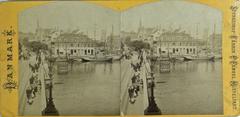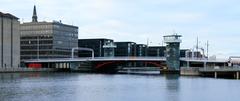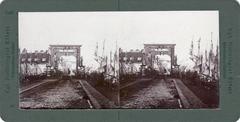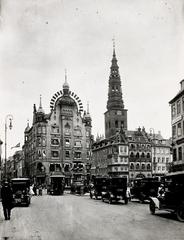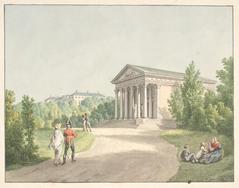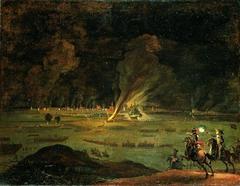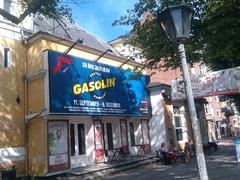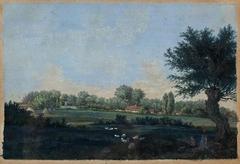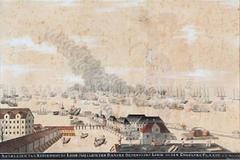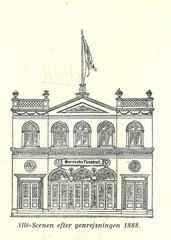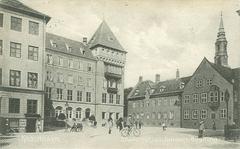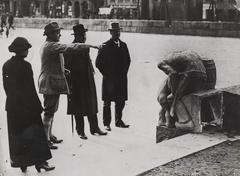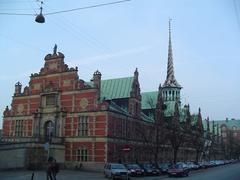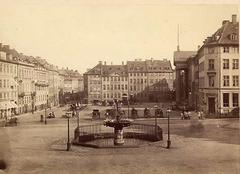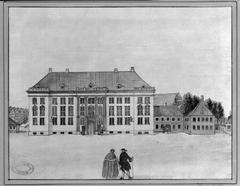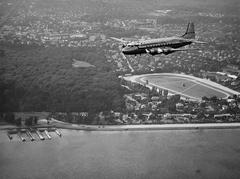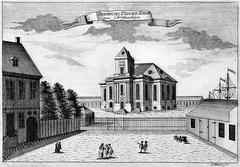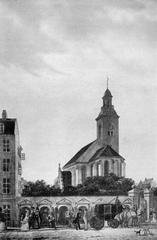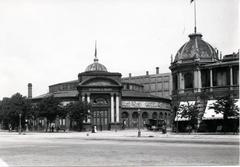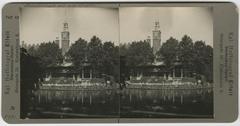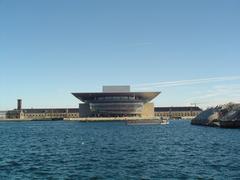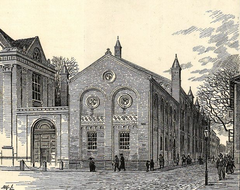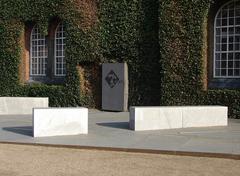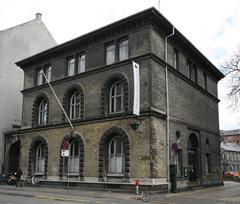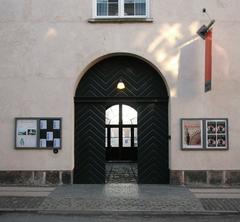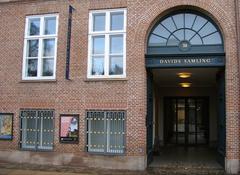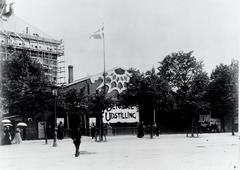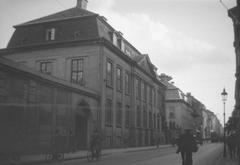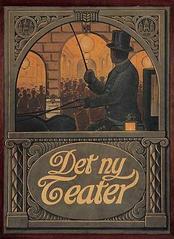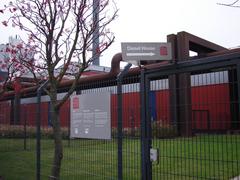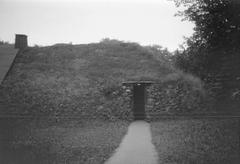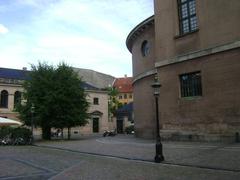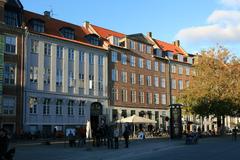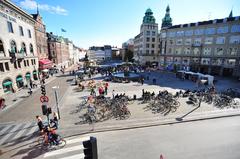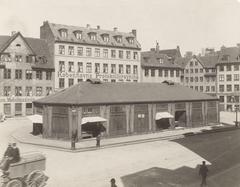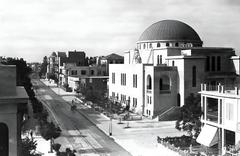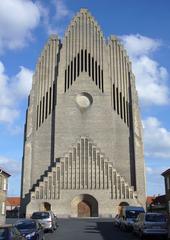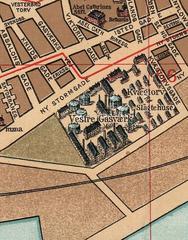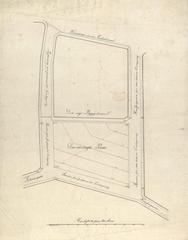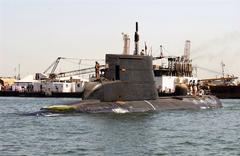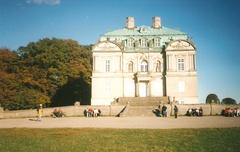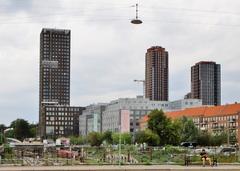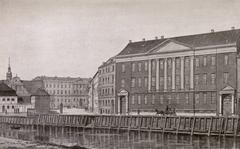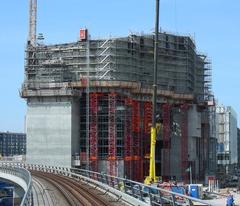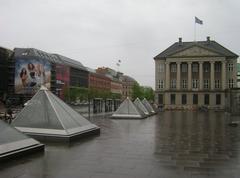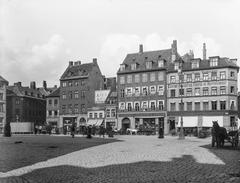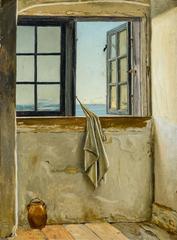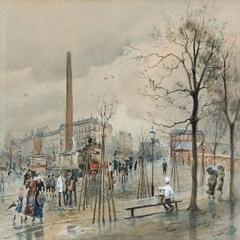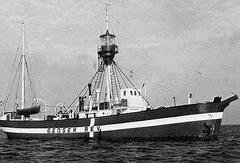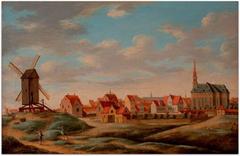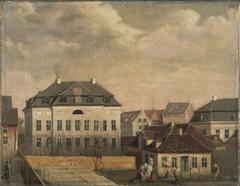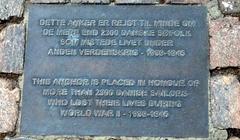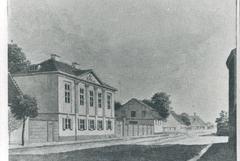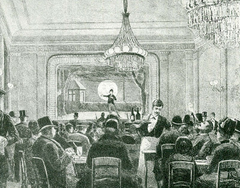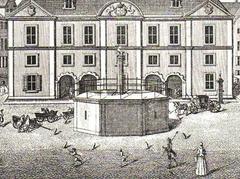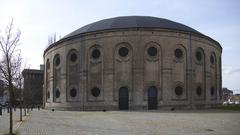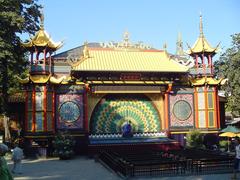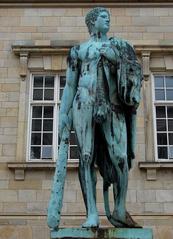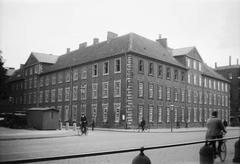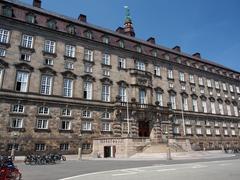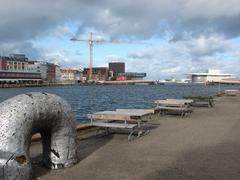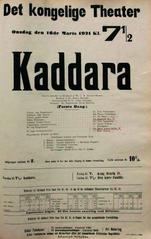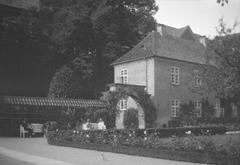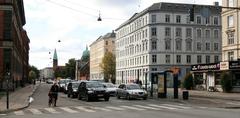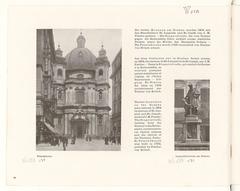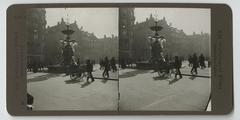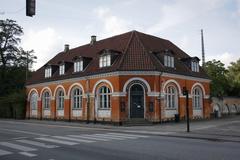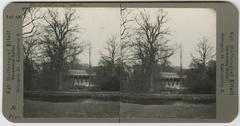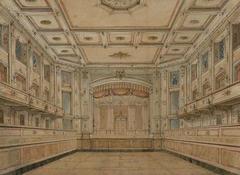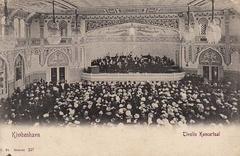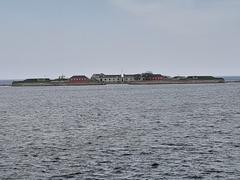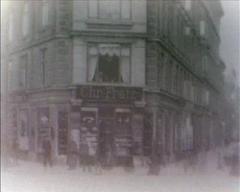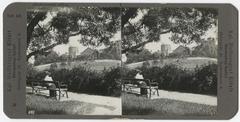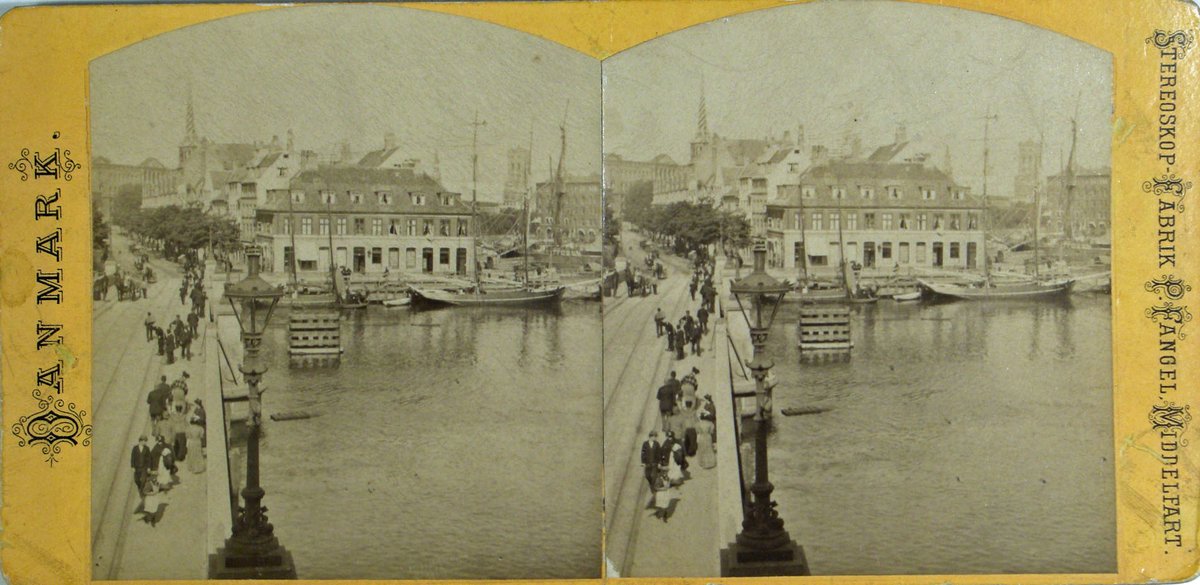
Comprehensive Guide to Visiting Knippelsbro, Copenhagen, Denmark
Date: 24/07/2024
Introduction
Knippelsbro, an iconic and historical bridge in Copenhagen, Denmark, is a testament to the city’s rich architectural and cultural heritage. First constructed in the early 17th century, Knippelsbro has undergone multiple transformations, evolving from a simple wooden structure to a modern bascule bridge. This guide delves into the bridge’s fascinating history, its architectural significance, and essential visitor information. Whether you’re an architecture enthusiast, a history buff, or a curious traveler, Knippelsbro offers a unique glimpse into Copenhagen’s evolution over the centuries (Wikipedia). The bridge is not only a vital piece of infrastructure but also a cultural landmark, featuring prominently in Danish currency and serving as a vibrant cultural center with the transformation of one of its towers into Kulturtårnet. This guide aims to provide a comprehensive overview of Knippelsbro, covering its historical background, architectural details, modern relevance, and practical travel tips for visitors (Visit Copenhagen).
Table of Contents
- Introduction
- Historical Background
- Architectural Significance
- Modern Relevance
- Visitor Information
- Travel Tips
- FAQ
- Conclusion
Historical Background
The First Bridge (1620)
The origins of Knippelsbro date back to the early 17th century when the first bridge was constructed between Copenhagen and Christianshavn. This initial bridge, built between 1618 and 1620, was commissioned by King Christian IV as part of the foundation of Christianshavn. Known as the “Great Amager Bridge” or “the long bridge,” it played a crucial role in connecting the walled city of Copenhagen with the newly developed area of Christianshavn (Wikipedia).
The Second Bridge (1712)
In 1712, a new wooden bridge replaced the original structure. This second bridge was notable for its decorative elements, including four Hercules sculptures created by the artist Johan Christopher Sturmberg. Unfortunately, neither the sculptures nor any images of them have survived to the present day (Wikipedia).
The Third Bridge (1816)
The third iteration of the bridge was constructed in 1816. This bridge continued to serve as a vital connection between Copenhagen and Christianshavn, facilitating the movement of people and goods across the Inner Harbour. The bridge’s design and construction details from this period are less documented, but it marked a continued evolution in the infrastructure of the city (Wikipedia).
The Fourth Bridge (1869)
By the mid-19th century, the need for a more robust and modern bridge became apparent. In 1869, the fourth bridge was constructed, incorporating advancements in engineering and materials. This bridge was designed to accommodate the increasing traffic and commercial activities in the area, reflecting the growing industrialization of Copenhagen (Wikipedia).
The Fifth and Current Bridge (1937)
The current Knippelsbro, the fifth bridge on this site, was inaugurated on December 17, 1937. Designed by the Danish architect Kaj Gottlob, this bridge is a bascule bridge, allowing it to open for passing ships. The construction was carried out by Wright, Thomsen & Kier in collaboration with Burmeister & Wain, a prominent shipyard in Copenhagen (Wikipedia).
Architectural Significance
Functional Design
Knippelsbro is renowned for its distinctive architectural features, particularly its iconic verdigris bridge towers. These towers, which are prominently featured on Denmark’s 200 kroner bill, were constructed at the Burmeister & Wain shipyard and are a testament to the functionalist design principles of the 1930s. The towers are made of iron, clad with wood and copper, and were installed using barge cranes to place them into the concrete foundations (Danish Architecture Center).
The design of Knippelsbro reflects the technological enthusiasm of the early 20th century. The bridge was made considerably wider than its predecessors to accommodate two lanes of traffic in each direction, with tram tracks down the center. This design was intended to facilitate the movement of workers and goods as Copenhagen’s housing, industry, and airport on Amager developed rapidly. The bridge’s higher deck allowed smaller boats to pass underneath without the need to raise the bridge, minimizing disruptions to both maritime and vehicular traffic (Danish Design Review).
Cultural Transformation
In 2017, one of the bridge towers underwent significant renovations to transform it into a cultural center known as Kulturtårnet (the Cultural Tower). This renovation marked the 80th anniversary of Knippelsbro and repurposed the tower from a break room for bridge officers into a space for art, music, gastronomy, and other cultural experiences. The tower now offers a unique view over the city and serves as a vibrant cultural institution on the Copenhagen harbour (Visit Copenhagen).
Name Evolution
The name “Knippelsbro” has an interesting historical evolution. Originally known as Store Amager Bro (Great Amager Bridge) or Langebro (Long Bridge), the bridge was later referred to as Christianshavns Bro (Christianshavn’s Bridge) around 1700. The current name, Knippelsbro, is derived from Hans Knip, who became the bridge caretaker in 1641. Hans Knip was responsible for operating the bridge and collecting tolls from passing ships. His house, known as Knippenshus, led to the bridge being called Knippensbro. The modern form of the name, which misleadingly appears to be derived from the word “knippel” (meaning cudgel or truncheon), has been in use since the second half of the 19th century but has never been officially approved (Wikipedia).
Engineering Feats
The construction of the current Knippelsbro involved several engineering feats. The bridge towers, which house guard rooms, mechanical service areas, boiler rooms, and operating rooms, were designed to be functional and efficient. At the top of the towers, 13.5 meters above the water, there is a balcony with windows all around, where the bridgemaster managed the operation of the drawbridge. Today, the bridge is controlled remotely and is unmanned (Danish Architecture Center).
Modern Relevance
Knippelsbro remains a vital piece of infrastructure in Copenhagen, connecting the historic center of the city with Christianshavn. It is one of only two bridges that carry motor vehicles across the harbour in central Copenhagen, the other being Langebro. The bridge’s design and functionality continue to reflect the city’s blend of historical charm and modern innovation (Wikipedia).
Visitor Information
Visiting Hours
Knippelsbro is accessible 24 hours a day, though the Kulturtårnet has specific visiting hours that can vary depending on events and exhibitions. Check the Kulturtårnet website for the most up-to-date information.
Tickets
Access to the bridge itself is free. However, visiting the Kulturtårnet may require a ticket, especially for special events and exhibitions. Prices and availability can be found on the official Kulturtårnet website.
Accessibility
Knippelsbro is accessible to pedestrians, cyclists, and vehicles. The bridge’s wide lanes and pedestrian pathways make it easy for everyone to cross. The Kulturtårnet also offers accessibility options, including elevators and ramps.
Travel Tips
- Nearby Attractions: After visiting Knippelsbro, explore nearby attractions such as Christianshavn, the Church of Our Saviour, and Freetown Christiania.
- Photography Spots: The bridge offers picturesque views of the harbour and the city’s skyline, making it a perfect spot for photography.
- Guided Tours: Consider joining a guided tour to learn more about the history and significance of Knippelsbro and its surroundings.
FAQ
What are the visiting hours for Knippelsbro?
Knippelsbro is accessible 24/7, but the Kulturtårnet has specific visiting hours. Check their official website for details.
Do I need a ticket to visit Knippelsbro?
Access to the bridge is free. Tickets are only required for special events and exhibitions at the Kulturtårnet.
Is Knippelsbro accessible for disabled visitors?
Yes, the bridge and Kulturtårnet offer accessibility options, including elevators and ramps.
What other attractions are near Knippelsbro?
Nearby attractions include Christianshavn, the Church of Our Saviour, and Freetown Christiania.
Conclusion
Knippelsbro’s rich history and architectural significance make it a must-visit landmark for anyone exploring Copenhagen. Its evolution from a simple wooden bridge to a modern bascule bridge highlights the city’s growth and adaptation over the centuries. Whether you’re interested in its historical background, architectural features, or cultural transformation, Knippelsbro offers a fascinating glimpse into Copenhagen’s past and present. Plan your visit today to experience this iconic piece of Danish infrastructure.
For more information and updates, follow us on social media and check out our other related posts. Download our mobile app for an enhanced experience and stay up to date with the latest events and exhibitions at Knippelsbro.
References
- Wikipedia. (n.d.). Knippelsbro. Retrieved from Wikipedia
- Visit Copenhagen. (n.d.). Kulturtårnet Knippelsbro. Retrieved from Visit Copenhagen
- Tourist Secrets. (n.d.). Your Complete Guide to Visiting Copenhagen, Denmark. Retrieved from Tourist Secrets
- Daily Scandinavian. (n.d.). A Hidden Gem in Copenhagen. Retrieved from Daily Scandinavian
